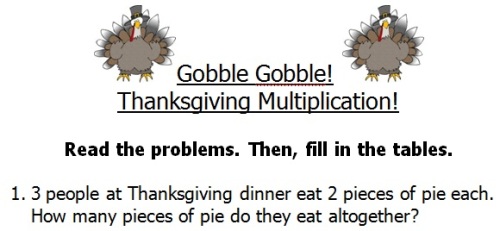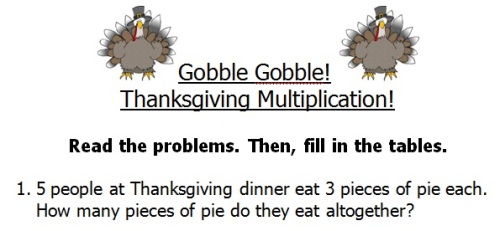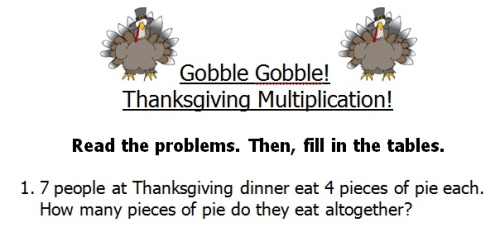Differentiated instruction is a practice that has many dimensions to it. My favorite at this point is what I like to call “grouping without groups.”
In this post, I will provide some examples of what grouping without groups looks like in my classroom so far this year. First, though, I’ll give a definition of it.
Think of grouping without groups as a type of invisible differentiation. Really all differentiation should be invisible. That is to say, the students should be of the impression that everyone is doing the same work. Otherwise, even if unintended, students wind up classified into groups based on who they wind up perceiving to be the smart kids and the dumb kids. This undermines community and engenders resentment from all.
So here are two examples of grouping without groups that have worked for me this year. (I find differentiation is easiest in math, and that’s where I have improved, so I am sharing math ideas).
Heterogenous Grouping – My students have struggled this year to work in groups – I’m not quite sure they’re developmentally there yet. When I’ve tried it, though, groupings have been “random.” I don’t assign groups based on who rocks at math and who struggles mightily. The groups appear random to the students, but I plan them a certain way. Each group has students of varying math abilities. In addition, the students are grouped based on personalities. To the students, the groups are arbitrary, but to me, they are guided by the hope that the students I put together will be able to effectively learn from and with each other. The big bonus: no one looks around the room identifying group A as “smart” and group D as “dumb.” Since they see no rhyme or reason to the groups, the students can better focus on the tasks before them.
Same Concept, Different Levels. In my class, I have students who can add and subtract with counters and some who know their multiplication facts. The chasm between my “lowest” and “top” math students is quite, quite vast. Yet, they don’t need to know that.
A great way to differentiate invisibly is to give everyone what appears to be the same work, differentiated by difficulty. In a recent math assignment, students were unaware that there were three different problems passed around. To me, of course, it was based on understanding students’ current levels. All the students saw, though, was identical paper. Had they had the chance to look closer, they would have noticed differences:
See, everyone is doing the same work, only they’re doing it at a level that suits them. No one is singled out for being good at math or bad at math – everyone is just accepted as where they are. No value is assigned. That’s pretty much the essence of grouping without groups.
If you have other ways of making differentiation invisible, I would love for you to share them!












Thanks for the great examples, it’s a great article so that we copy/paste it with citation back here. Looking forward to more great practices from your classrooms.
http://www.classroom-aid.com/blog
Pingback: Remainders: Bronx school tells parents to clam up in the press | GothamSchools
For content like science or social studies, have your stronger readers start by reading and responding to a text, then go on to watch a video or do an activity that deepens and enriches what they read. Meanwhile, have your weaker readers start with a video or activity that previews the material in the text, and end by reading and responding to the text. Yes, you do have to group them by ability but in my experience, if you do this from time to time, mix up the groupings to suit the task, and give them tasks from which they can learn successfully, you get few or no complaints. Plus, both groups get to read and watch a video or do an activity, so the tasks feel equivalent to the kids…
Also, I don’t know much about math in elementary school, so I may be wrong, but it seems to me that the work you gave for T’giving is more about identifying that these word problems require multiplication and then applying that skill, which seems to be the same in all three levels. Is there really that much difference between the difficulty levels of the specific facts? I would think about giving the most-ready kids a sheet of word problems, the middle group a sheet with the first one scaffolded in some way and the others just straight problems, and the least-ready group a sheet where some scaffolding is provided for all the problems.
I very much appreciate your point regarding the Thanksgiving work I posted. I will explain my rationale. First, we are in the initial phases of multiplication – understanding that multiplication is really about x groups of y – and not memorizing facts. So, to that end, certain students are able to more efficiently work through the steps (drawing pictures to represent the groups -> writing “I have __ groups of __.” -> computing the repeated addition -> writing the multiplication sentence) with larger numbers. Others may take the same amount of time with smaller numbers. They all knew they were working on multiplication…
With all that being said, your ideas for ways to scaffold the word problems are very good ones, indeed. I hadn’t remembered that as a strategy when I planned these but in a subsequent lesson around problem solving by making a table, those kinds of scaffolds were provided.
I hope others can take something from your ideas as I have.
Pingback: What Should We Keep in Minds about Differentiation ? | Classroom Aid
Pingback: Talking Turkey, Differentiation Style | From the Desk of Mr. Foteah
Pingback: New-Teacher Academy 2015 on #ntchat: Lesson Planning » Teaching With Soul